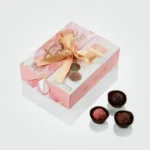5 Rules of Packaging Design (And How to Break Them)
To put it another way, good packaging is now an important marketing tool. Good custom-designed packaging enhances brand recognition, protects the product, and makes an unforgettable experience during unboxing.Since all products require packaging, why not make your best-looking packaging box work for you? If you’re new to the process, we have five solid packaging design rules to guide you on your next packaging project—and a few strategic ways to break them for maximum impact.
1. Know Your Priorities
Before designing your packaging, identify your most important goals. Do you want to attract new customers? Showcase your product effectively. Boost your brand identity? Defining your objectives helps establish a design hierarchy and ensures every design element serves a purpose.
For instance, creating a focal point on your custom-designed package using bold imagery or strategic color placement draws the eye. Establishing a font hierarchy, where larger text highlights key messages, naturally guides the reader’s focus. The right balance of text, images, and negative space makes your best-looking packaging box stand out.
Breaking the Rule:
Sometimes, breaking conventions leads to unexpected success. Instead of emphasizing a focal point, you might experiment with minimalist designs or hidden logos (such as watermark-style branding). Placing essential information inside the cardboard boxes rather than on the exterior can also create an element of surprise, enhancing customer engagement.
2. Keep It Clean

A cluttered design overwhelms consumers and detracts from your product’s message. Legible fonts, appropriate negative space, and a cohesive layout contribute to a clean and visually appealing custom-designed package. Consumers should instantly understand what your product is about without unnecessary distractions.
Breaking the Rule:
While cleanliness is crucial, sometimes an artistic approach can make your best-looking packaging box even more eye-catching. Textured backgrounds, abstract graphics, and slightly misaligned fonts can create a dynamic, organic feel. Deliberate imperfection can convey uniqueness and authenticity, setting your brand apart from competitors.
3. Keep It Consistent
Consistency strengthens brand identity and ensures a cohesive packaging experience across different products. Using a set color palette, font scheme, and branding elements helps customers instantly recognize your product. Sticking to a uniform design theme across your printed tissue paper and corrugated boxes reinforces your brand’s image.
Breaking the Rule:
While consistency is essential, too much repetition can make packaging predictable. If your brand thrives on creativity, consider seasonal packaging designs or limited-edition prints. Many brands successfully create intrigue by incorporating variations within a broader visual theme—such as alternating color schemes while maintaining the same typography. Printed tissue paper with varying patterns or special-edition boxes can captivate repeat buyers.
4. Keep It Quality
High-quality materials, sharp graphics, and clear typography make a huge difference in how consumers perceive your packaging. A best-looking packaging box should use high-resolution images, vibrant colors, and durable materials like corrugated boxes that protect products effectively. Sustainable and premium materials add value and appeal to eco-conscious customers.
Breaking the Rule:
The simple design works, for the most part, in the case of eco-friendly or price-sensitive brands. The careful use of raw, unrefined materials actually conveys a message of sustainability and authenticity. Some brands successfully use pixelated designs or distressed fonts to create an artistic, vintage-inspired look. The key is to ensure that any deviation from traditional quality is intentional and aligns with your brand message.
5. Keep It Interesting
Consumers interact with countless products daily, so making your packaging stand out is essential.Unique textures, bold typography, and appealing color schemes can make custom-designed packaging striking. The more stimulating the unboxing experience, the greater the propensity of customers to post it on social media and increase the likelihood of brand presence.
Breaking the Rule:
Sometimes, simplicity is the most striking design choice.Monochromatic color schemes or completely text-only designs speak in bold languages. The execution of minimalist packaging creates an aura of elegance and sophistication. For audiences who appreciate exclusivity, going for a subdued, understated design option may prove more effective than an in-your-face design cocktail.
Conclusion
At Panda Scientist, we believe that packaging is more than just a container—it’s a marketing asset.The way your design meets functional criteria as well as catches the eye for corrugated boxes, printed tissue paper, or perhaps unusual packaging dimensions such as length, width, and depth will make or break it. The ability to know when to follow and when to break the rules is key to creating such innovative and memorable packaging.
Do you have an example of a creative packaging rule-break? We’d love to see it! Share your designs with us on Pinterest, Facebook, or Instagram. Get started on your next packaging design with Panda Scientist today!
Here at Panda Scientist, we’ve seen almost everything when it comes to packaging, but only almost! Have a great example of how you’ve taken a packaging design rule and broken it successfully? Reach out and let us know! We love to see what you come up with here or via Pinterest, Facebook, or Instagram.
Get started on your next packaging design today!







